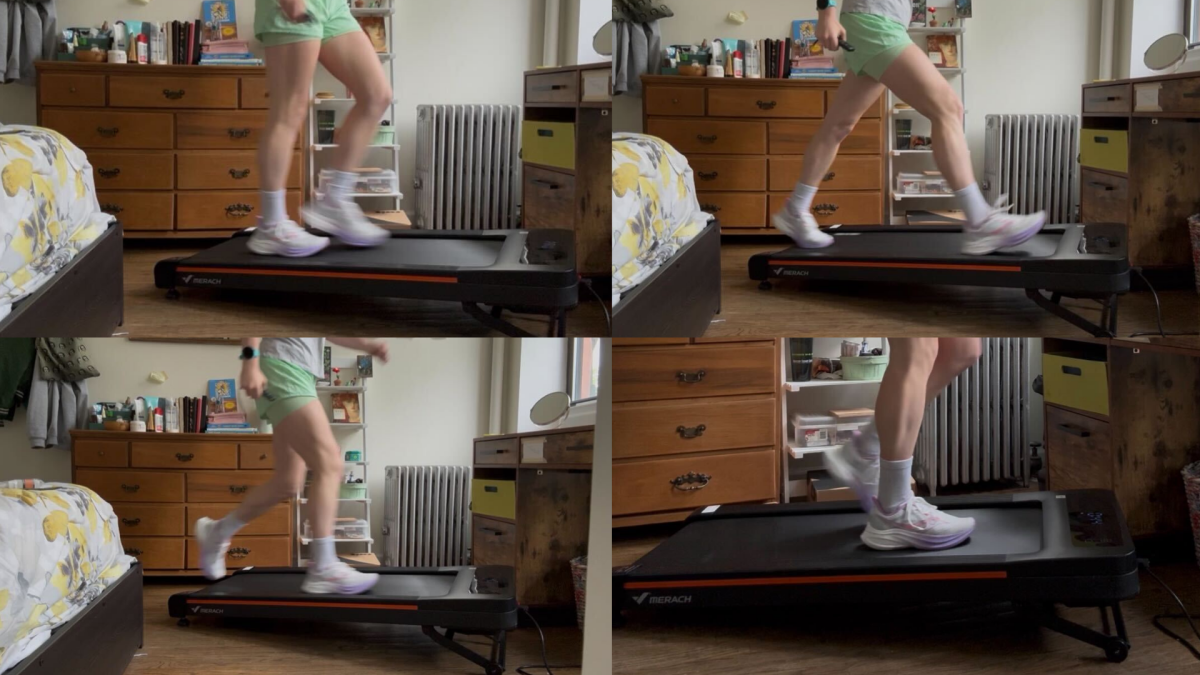We can earn a reward for the links on this page.
Someone who has logged in thousands of miles on the roads, paths, and track preparing for a marathon, you might assume, but here is the truth: some of my favorite training in my walking album at home. As Lifehacker’s senior health reporter Beth Skwarecki has previously explained, walking there is cardio. Most important to me, walking is a heart without the big stress of running. This makes them a perfect recovery day, which means that you want to maintain your fitness without increasing your general training load. Especially when I am pressured for a time or I need an active recovery that still produces results-translation into a high incline walking pillow routine.
Now that you hear “walking”, you are likely to think of a trendy 12-3-30 routine. Although its promises are wildly overloaded online, I have no problem with this exercise. It is both simple and challenging: you set the slope to 12%(the highest you can go to many treadmills), speed of 3.0 miles per hour (fairly typical walking speed for most of us on a flat land) and do it for 30 minutes. Personally, I need a routine with more different. If all I did, walk at the same speed and tilt for 30 minutes, I would lose my mind. It’s not just the same as a zone of 26.2 miles.
What 12-3-30 gets right is a focus on steep slopes. You can speed up walking all you want but stable slopeYou don’t activate all the same muscle groups Used for running. Think that glutes, setback and calves – these are the muscles you need to hit to get it through the later miles of the marathon. Trust me.
30 minutes of high incline walking pillow training
To do this exercise, you will need a walking album, which rises up to 12%slope and 4 mph. For me it is Merach W50 (which I will check here if you want to learn more). As with any exercise, you can adjust the numbers to your fitness level or walking disk details. If you adjust certain speeds or partitions, I recommend that you have the exercise of the exercise: a strong slope (to keep your muscles closed) with a continuous variation (to keep your mind closed). The variation of this exercise keeps me consistent over time, where 12-3-30 made me burn the other day.
Warm -up (five minutes)
-
Minute 1-2: Walk at speed of 2.5 mph, moderate slope (6-8%)
-
Minutes 3-5: Rise gradually 3.2 mph, rises to a slope of 10%
Main Series (20 minutes)
Here the magic happens.
Minute 6-9: Power Walk spacing
-
30 seconds at a speed of 4.0 mph, maximum slope
-
90 seconds at a speed of 3.5 mph, maximum slope
Repeat this pattern twice.
Minute 10-13: Stable space
What do you think so far?
This should feel comfortably hard – you should be able to speak in short sentences.
Minute 14-17: Speed stairs
-
Minute 14: 3.3 mph, maximum slope
-
Minute 15: 3.5 mph, maximum slope
-
Minute 16: 3.7 mph, maximum slope
-
Minute 17: 4.0 mph, maximum slope (or maximum durable speed)
Minutes 18-25: pyramid spacers
-
1 minute 4.0 mph, maximum slope
-
30 seconds recovery 3.0 mph, reduce slope to 8%
-
2 minutes 4.0 mph, maximum slope
-
30 seconds recovery 3.0 mph, reduce slope to 8%
-
3 minutes 3.8 mph, maximum slope
-
30 seconds recovery 3.0 mph or slower, reduce the slope to 8%
Cooling (5 minutes)
-
Minutes 26-28: Gradually reduce speed 3.0 mph, reduce slope to 6%
-
Minute 29-30: Easy walk 2.5 mph, slope with 3%
Progressive overload options
When this exercise feels too easy, you can proceed:
-
Increasing speed at intervals of 0.1-0.2 mph
-
Adding one or two minutes to the main force
-
Including short jogging intervals during the Speed Stairs section if your walking plate comes fast enough
-
LIGHT -HANDING LEARNING (one or two pounds) to an increased upper body engagement
Result
As runners, we are sometimes dependent on the idea that harder always means faster or further away. A good walking distance exercise reminds me that intensity can be in many forms. The combination of steep slopes and strategic speed work creates a challenging, time -efficient session that beautifully complements running training. Try it the next time you were printed, but you still want to challenge yourself – with a slope maximized, your feet will definitely feel it the next day.
